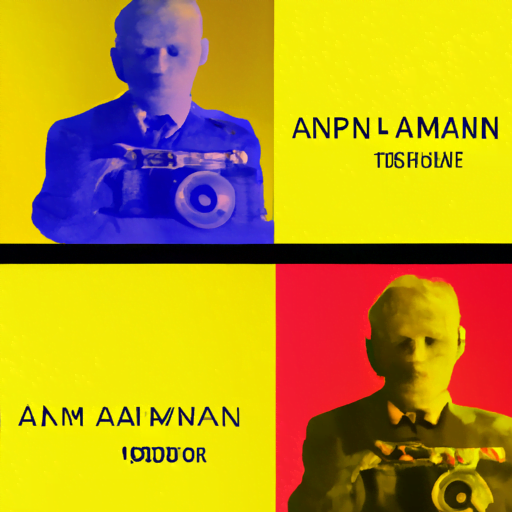
-
Table of Contents
Armin Hofmann: The Master of Swiss Graphic Design

Armin Hofmann, born on June 29, 1920, in Winterthur, Switzerland, is widely regarded as one of the most influential graphic designers of the 20th century. His innovative approach to design, emphasis on simplicity, and dedication to teaching have left an indelible mark on the field of graphic design. This article explores the life, work, and lasting impact of Armin Hofmann.
Early Life and Education
Armin Hofmann’s journey into the world of design began in his early years. Born into a family of craftsmen, he developed a keen eye for aesthetics and a passion for art. In 1937, he enrolled at the School of Arts and Crafts in Zurich, where he studied under the tutelage of renowned Swiss designers, including Ernst Gubler and Alfred Willimann.
Hofmann’s education was interrupted by World War II, during which he served in the Swiss Army. However, this period of service allowed him to further refine his artistic skills and develop a deep appreciation for precision and discipline.
The Swiss Style: A Revolution in Design
Armin Hofmann’s work is closely associated with the Swiss Style, also known as the International Typographic Style. This design movement emerged in Switzerland in the 1950s and revolutionized the field of graphic design with its emphasis on clarity, simplicity, and objectivity.
The Swiss Style rejected the ornate and decorative elements of previous design movements, such as Art Nouveau, in favor of clean lines, grid systems, and sans-serif typography. This approach aimed to communicate information efficiently and effectively, without unnecessary embellishments.
Hofmann’s work exemplified the principles of the Swiss Style. His posters, logos, and typography were characterized by their bold use of color, geometric shapes, and meticulous attention to detail. His designs were not only visually striking but also highly functional, conveying information with clarity and precision.
Notable Works and Contributions
Armin Hofmann’s body of work is extensive and diverse, spanning over six decades. His designs have graced countless posters, logos, and corporate identities, leaving an indelible mark on the world of graphic design. Here are some of his most notable works:
1. Giselle Poster (1959)
Hofmann’s poster for the ballet “Giselle” is a prime example of his mastery of the Swiss Style. The poster features a simple, yet powerful, composition with bold typography and a striking contrast between black and white. The use of negative space and geometric shapes creates a sense of movement and elegance, capturing the essence of the ballet.
2. Basel School of Design (1968)
As a professor at the Basel School of Design, Hofmann had a profound influence on the next generation of designers. He developed a comprehensive curriculum that emphasized the fundamentals of design, including typography, color theory, and composition. His teaching methods focused on encouraging students to think critically and experiment with different design solutions.
3. Corporate Identities
Hofmann’s expertise in corporate identity design is evident in his work for various companies, including the Swiss National Tourist Office and the pharmaceutical company Geigy. His logos and visual identities were characterized by their simplicity, versatility, and timeless appeal. These designs continue to be influential and have set a benchmark for corporate branding.
The Legacy of Armin Hofmann
Armin Hofmann’s contributions to the field of graphic design extend far beyond his own work. His dedication to teaching and mentorship has shaped the careers of countless designers around the world. His emphasis on the fundamentals of design, such as typography and composition, continues to be taught in design schools today.
Hofmann’s influence can be seen in the work of many contemporary designers who have embraced the principles of the Swiss Style. His emphasis on simplicity, clarity, and functionality has become a hallmark of modern design, transcending time and cultural boundaries.
Key Takeaways
- Armin Hofmann is a highly influential graphic designer known for his work in the Swiss Style.
- The Swiss Style revolutionized graphic design with its emphasis on simplicity and clarity.
- Hofmann’s notable works include the “Giselle” poster and various corporate identities.
- His teaching at the Basel School of Design has had a lasting impact on the field.
- Hofmann’s legacy can be seen in the work of contemporary designers who embrace the Swiss Style.
Conclusion
Armin Hofmann’s contributions to graphic design have left an indelible mark on the field. His innovative approach, dedication to teaching, and timeless designs have made him a true master of his craft. As the Swiss Style continues to influence contemporary design, Hofmann’s legacy will continue to inspire and guide future generations of designers.
